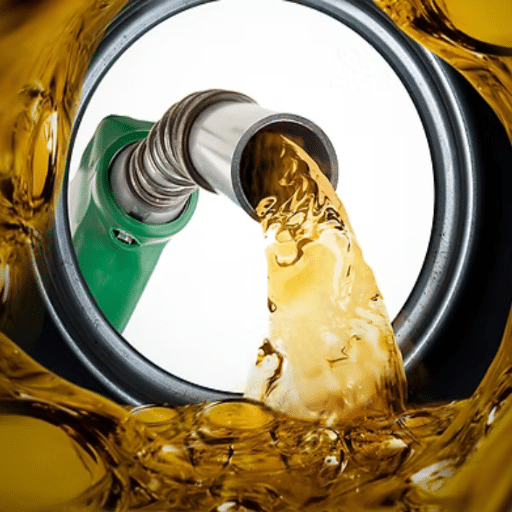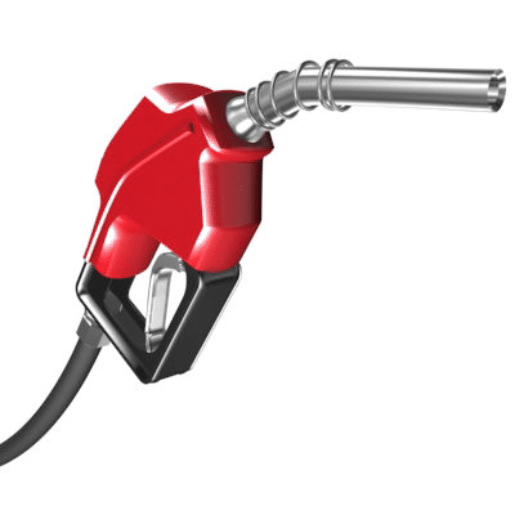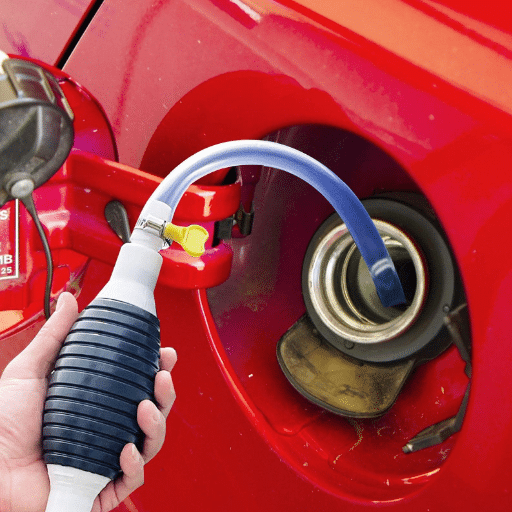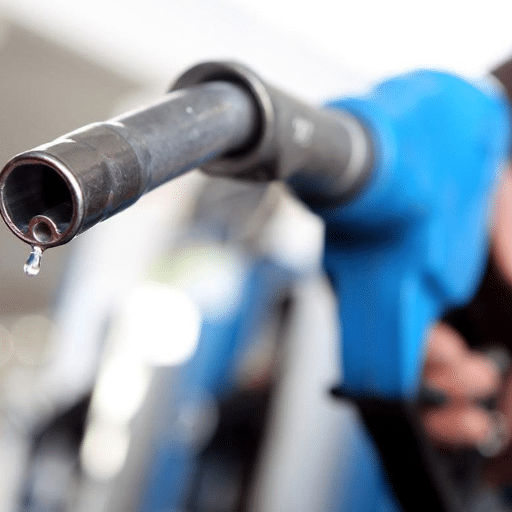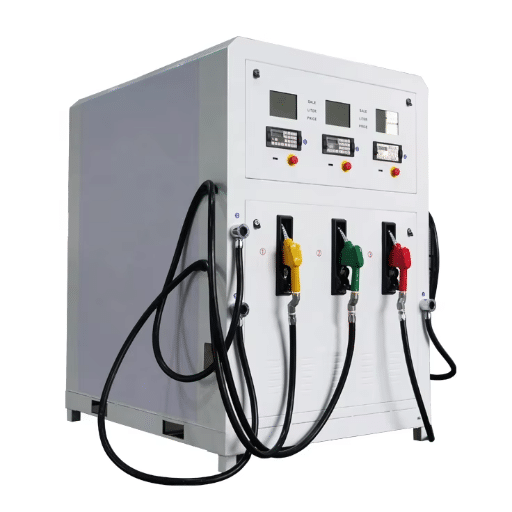A perfect little gas station for a traveler seeking convenience is of paramount importance; a business owner has the same importance for choosing fuel prices. However, with so many options out there, it always boils down to what differentiates one station from the other. This blog post will discuss the key decision criteria for choosing a small gas station location, prices, services, and an additional level of reliability. At last, we will feel confident that we can spot the best option in accordance with our needs while ensuring efficiency and peace of mind. So, let’s dive into what makes a small gas station right for you.
Understanding the Gas Station Concept
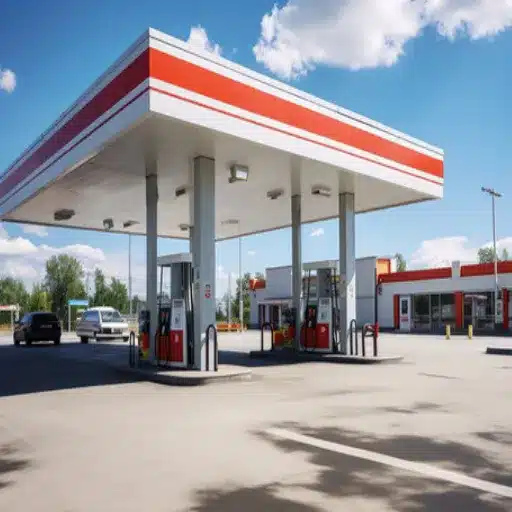
A gas station is a place where vehicles stop to be refueled, and that refueling usually involves gasoline or diesel. That said, many smaller gas stations also interrupt their routine business to feature convenience items, snacks, beverages, and some very minor vehicle services, such as airing tires or washing windshields. They’re there so that drivers can get the necessities for a smooth and otherwise uneventful trip. A good gas station would always combine ease of access with fair pricing and quality service to satisfy customer needs.
What Makes a Mini Gas Station Unique?
Mini gas stations are a special breed caused by smaller sizes, strategic placement, and services designed to cater to the special needs of a given community. A mini gas station is normally a pit stop in tight spaces situated in areas between urban and suburban areas, as opposed to a bigger establishment. Their priority is quick service with a small number of fuel pumps and an efficient layout that allows the driver to refuel and carry on with their journey.
The post has shown a trend that smaller-format gas stations are preferred in high-density areas due to their capability of settling in tight areas, yet fulfilling the increased demands for fuel and convenience. A few of the mini gas stations have also embraced more advanced payment systems with contactless and app-based solutions, promoting the ease of customer service. Plus, such small stations collaborate with local businesses to sell special snack options or unique treatments from local sources, further distinguishing themselves from big companies. Accessibility, adaptability, and innovation set apart the mini gas stations in the contemporary market.
The Importance of Location in Station Design
In keeping with its strong connection with access and on-hand profitability, location is considered extremely important in the setting up of a gas station. Alleviating the needs of long-haul travelers and daily commuters, stations on busy highways or at major intersections will naturally record higher traffic. Recent studies suggest that gas stations located within one mile of urban areas register up to 40% more customer walks compared to those in the suburbs, thereby stressing the premium placed on cities with high populations.
A station may increase in attractiveness when closely set with complementary businesses such as convenience stores, fast-food chains, or car washes. Many motorists, as much as 75%, want to fuel at locations that offer one or more complementary services, thereby turning a quick fuel stop into a full-service visit. These considerations, including price, land zoning regulations that could greatly influence development and initial investment cost, set the nature of the site.
In other words, Comfort and ease of access will go a long way in keeping customers happy. Research shows that greater possibilities for ingress and egress-if the station can have more doors or has a drive-through lane, that is-can increase the number of recurring visits by as much as 25%. Visibility is another factor: stations that are well-lit and in top places with clear signage will draw in passersby, especially during late hours and when weather conditions are bad. Considering and weighing demographics, flows in traffic flows, and the amenities close by, businesses will somehow be able to craft an ideal location strategy for growth that will last forever.
Key Features of an Ideal Gas Station
Convenient Accessibility
Accessibility is considered an ideal feature of a proper gas station location, and its location near an expressway, large intersection, or heavy traffic count appeals to customers. Additionally, fair entry-exit points for all vehicle sizes, including big trucks and trailers, will certainly boost the customer experience. According to studies, 64% of gas station patrons demand easy access to their choice of fueling.
Strategic Location Near Amenities
Being close to such complementary businesses as grocery stores, restaurants, and car washes enhances customer convenience for foot traffic. Gas stations in mixed-use developments have reported from 20% to 30% additional income due to customers availing multiple services in a single stop. These amenities in proximity make it more convenient for the gas station to be considered a one-stop destination.
Advanced Payment and Technology Options
Technologically advanced gas stations with a contactless payment option and mobile app integration for their loyalty program would guarantee customer retention. About 70% of the customers prefer gas stations that give them options for a quick and secure form of payment, thereby suggesting the importance of having advanced technology implemented in the station. Such features save their time while ensuring security and ease in the entire fueling process.
Safety and Security Measures
Safety is a prime condition for a successful gas station. Great lighting, CCTV surveillance, and emergency alarms make a customer feel secure, especially when it is a less-populated area at night. Those stations with visible safety provisions report higher customer satisfaction and loyalty.
Cleanliness and Maintenance
Clean facilities that are well-maintained positively influence customers’ decision-making. A recent survey showed 84% of customers are more likely to return to a gas station if its restrooms, fuel pumps, and convenience store areas are clean and orderly. Regular maintenance keeps a gas station working and also helps to build trust and credibility with the visitors.
Sustainability Initiatives
More and more stations are going greener to attract environmentally conscious consumers. They may have a variety of such systems, including electric vehicle (EV) charging stations, biofuels, or solar lighting systems. With a green image, customers feel good about these stations and will often choose them over a traditional alternative.
Competitive Pricing and Loyalty Programs
Pricing remains an important consideration for a majority of customers. Discounted fuel pricing, coupled with attractive loyalty programs for repeat business, helps retention. For instance, loyalty scheme-registered consumers are 51% more likely to return to a given station than an unregistered.
These key features, when put together, would allow gas stations to create the perfect environment for attracting new customers whilst retaining the loyalty of regular users.
Design and Architecture of Small Gas Stations
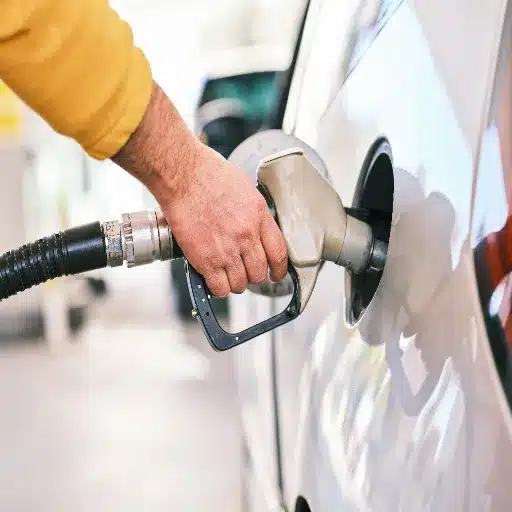
Small-gas-station planning, by nature, must encapsulate considerations regarding operational efficiency and the general convenience of its customers. The layout should take into careful consideration the organization of the whole gas station system, from fuel dispensing and parking to customer ingress and egress, keeping in mind the need to comply with regulations for safety. The pumps of the fuel must be spaced to provide maximum convenience to vehicles of different sizes in coming and going, thus avoiding congestion.
A small gas station facility with a compact-store design, which is creative in displaying products and easy to navigate. Lighting and signage should be adequate to guide and attract attention. Other features that could be included for sustainability benefits and lower operation costs are solar panels or Green Star-rated systems. A clean and organized look benefits the customer experience and holds the potential of serving as an incentive for repeat visits.
Creative Store Layouts for Enhanced Convenience
Advancing joint customer satisfaction, space optimization, and selling performance is possible through innovative store layouts. Effective store layouts greatly influence customer buying behavior, research says. For example, grid layouts, commonly used by supermarkets, are known to allow customers to search for specific items quickly. Free-flow layouts used in boutique stores, on the other hand, promote slower browsing and encourage those impulse purchases.
Engagement with the consumer can increase by up to 25% with the implementation of experiential zones such as sampling areas or interactive product displays. Putting in-stock and high-demand products at the back of the store ensures that while customers walk to the back of the store, they pass through other departments, giving them exposure to a wider selection of goods. Heat-mapping tools have also been employed effectively in analyzing traffic patterns so that adjustments, such as the repositioning of displays, can be made along with customer direction toward underutilized areas.
Moreover, technology integration through smart shelving or an augmented reality application can assist in easing the shopping process. Smart shelves may be furnished with sensors and digital screens that display product details or promotions in real time, aiding our customers’ experience in making informed decisions. By emphasizing implementations of such dynamic layout strategies, stores foster a setting that is convenient, engaging, and innovative for the customer.
Utilizing Steel Structures for Durability
Steel structures are unique and are being given to the span of flexibility, strength, and serviceability in constructions of various types. Durability ranks very high among the benefits of steel. It is not subject to warping, shrinking, or cracking, and hence, the buildings and infrastructures can remain for decades with their structure intact. For example, structural steel has an approximate tensile strength of 400-550MPa and hence, can bear heavy stresses and loads.
The steel can stand different environmental conditions. Areas with seismic activity stand in good hands, as its flexibility allows it to absorb and distribute energy from an earthquake. Furthermore, due to the modernization of galvanizing and protective coatings, it can be prevented from corrosion under adverse environmental conditions, such as in coastal areas.
According to the sustainability perspective, steel is regarded as a recyclable material; worldwide reports suggest that almost 80% of steel used in construction is recycled. Hence, this minimizes the environmental footprint of the building project, in addition to promoting resource efficiency. Steel structures for inventive applications, such as modular construction, can simplify construction processes and waste generation.
Apart from skyscrapers, bridges, and industrial edifices, steel’s superior resilience and versatility make it a modern construction material. Steel serves very well for infrastructure, being practical and innovative, as well as economically and environmentally sound for a long-term infrastructure.
Incorporating Unique Decor Elements
If and when used in a room, such individualistic decor elements would, of course, accentuate the appearance of the room and would act to express personal character and style. Statement pieces like stunning large wall paintings or intricately carved light fixtures can actually act as the focal points, drawing attention and creating ambiance for that setting. Natural materials such as reclaimed wood and stone have become popular choices in the ambiance creation arena, as these pure colors warm one up while promoting a deep sense of calm.
According to industry reports, nearly 55% of homeowners now proceed with the philosophy of green decorating-I mean, they would incorporate recycled furniture and materials for the environment. And then about 65% of interior designers think that layering textures will bring more depth and tactility to decorating, like combining velvet, leather, and linen.
Technology-driven decor is fast becoming a trend for modern interiors. Smart light panels allow millions of colors to be customized, and interactive artworks provide LED displays as a cutting-edge evolution. Such integrations give functionality and futuristic flair to the interior designs, thusifying that technology can blend with art.
Components of a Small Gas Station
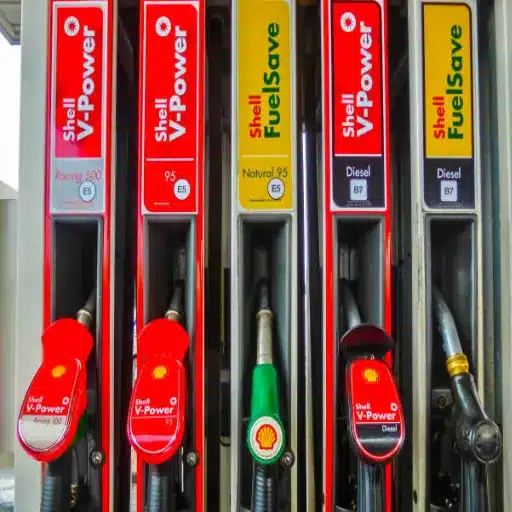
Components at a small fuel station are typically as follows:
- Fuel Pumps – Dispensing fuel into vehicles, usually gasoline or diesel.
- Fuel Tanks – Underground storage tanks that hold the working fuel supply.
- Canopy – Covered structure above the pumps to shelter customers from the elements.
- Payment Systems – The systems customers use at this point to make payments, usually integrated into card reading/pay pass devices.
- Convenience Store (Optional) – A small shop offering snacks, soft drinks, and some essentials.
- Signage – Displays price for gas and branding to bring in customers.
- Air and Water Stations – Inflate tires and fill up the water level in vehicles; usually offered as an added amenity.
- Lighting – Lights suitable for safety and visibility, especially at night.
Hence, ensuring the serving of customer needs while ensuring efficient and safe operation.
Essential Fuel Pumps and Nozzles
Fuel pumps and nozzles are an important element of any gas station operation, ensuring that fuel is dispensed in an efficient and safe manner to vehicles. In modern times, for accuracy and reliability, fuel pumps are installed with highly advanced technology. The majority of pumps use flow meters capable of measuring exactly how much fuel is issued to keep customers informed. The standard fuel flow rate for most pumps is about 7-10 gallons per minute for cars and 20-60 gallons per minute for trucks.
Fuel nozzles come equipped with safety features that shut off fuel flow depending on some conditions, such as a full tank, so no fuel can spill out. Compatible sizes and types are assigned to nozzles for different fuel types, including gasoline, diesel, and alternative fuels such as compressed natural gas (CNG). Besides that, advanced nozzles feature a vapor recovery system that prevents emissions by capturing fuel vapor during the refueling process.
Technological advancements facilitate the introduction of innovations such as touchless payments at pumps, smart sensors to detect leaks, and sturdiness against frequent usage. These innovations go in line with the customer convenience and environmental safety nexus: two issues fast marching with the new-age fuel industry standards.
Storage Tanks and Their Importance
Storage tanks are of utmost importance within the fuel industry as they ensure that petroleum products are contained safely and efficiently. These tanks are designed to avoid contamination of the fuel, leakage, or emission of vapors that can be considered environmentally hazardous and can lower the quality of the fuel. As per recent industry data, more modern storage tanks are often double-walled or have a secondary containment system so that an extra layer of protection can be rendered against the possibility of spills or leakage.
Today, another layer of technology has been added for monitoring systems: technology such as automated tank gauging (ATG) to determine fuel levels and alert operators to any possible irregularity on a real-time basis. This keeps loss of product to a minimum and allows operators to handle potential problems proactively. Corrosion-resistant materials, such as fiberglass-reinforced plastic (FRP) or coated steel, are often chosen in the manufacturing of storage tanks for enhanced durability, especially under harsh environmental conditions.
Environmental protection mandates are also set as considerations in the design of fuel storage tanks. An example would be SPCC, which the EPA has drawn up as a set of rules requiring any facility to use all means necessary to protect water bodies from contamination. Providing this kind of fence around sustainability is a quick way for companies to operate efficiently. By integrating these guarding principles, storage tanks can continue to remain an industry-proof and Green solution to fuel handling today.
Convenience Store Setup and Design
A convenience store’s setup requires planning and strategization to give the best usage and customer experience. Research has concluded that the average range for convenience stores is 2,400 to 2,500 square feet, while bigger stores have more than 4,000 square feet, thus allowing them to offer a larger selection of products and even services such as a hot food station or seating area.
Layout is very much correlated with more customer satisfaction and sales. According to studies, placing high-traffic items like beverages, snacks, and essentials in locations that are accessible but somewhat distant from the customer will elevate the time the customer spends in other competing products. Proper signage and displays can make navigation easier and spotlight current promotions effectively.
The modern convenience shop blends technology with convenience, showcasing self-checkout kiosks and digital menu boards for self-paced shopping experiences. Energy-efficient fixtures help to reduce costs, while LED lights and refrigerated display cases with green cooling systems pursue sustainability. Lastly, a wider network of roadways, residential nodes, or gas stations all play into the store traffic generation and conversion into profit.
All these elements in their confluence assure the convenience stores bring to the ever-demanding realization of their communities.
Choosing the Right Location for Your Mini Gas Station
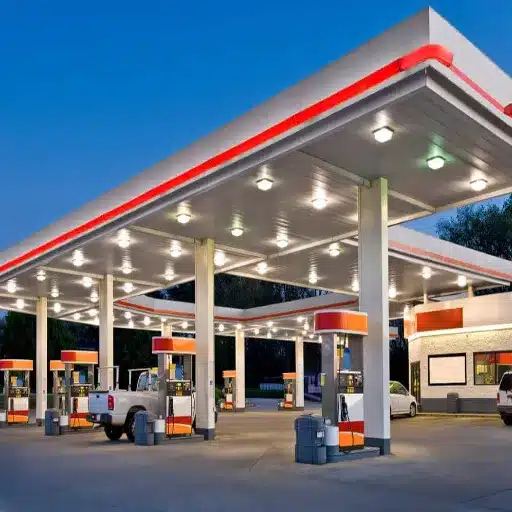
Selecting the right location for your mini gas station is paramount to its success. High-visibility, high-traffic locations attract the most business you think as an intersection, a busy roadway, or near a commercial building. Once set near neighborhood residential areas, the mini will get regular customers. Further, setting near big highways or main travel routes will see a lot of impulse visits by travelers. You will consider zoning in that area and competition in that area, just to make sure your station is fit from a legal point of view and has a strategic edge. Prioritizing the class of convenience and accessibility is thereby going to enhance the customer’s experience and drive consistent business.
Traffic Patterns and Accessibility
Understanding the flow of traffic and ensuring accessibility are essential in location selection for any kind of business, such as a gas station. Investigate peak hour traffic amid all hours in the day for hours of massive vehicle flows, as such times can affect customer flows. Areas with higher vehicle counts, especially near junctions, tend to draw more drivers in need of fuel and/or other services. Highways and arterial roads are very important since, in the early times, thousands of vehicles passed through each day. These are the two desirable criteria to consider for visibility and convenience.
Moreover, ease of access can sometimes sway the customers. Excellent in-and-out points drive repeat business, as do clear signs and low congestion. Go-ahead to check on parking availability in the vicinity of the location, plus let’s say if the site allows heavy or commercial vehicles will form part of your clientele. This, aligned with continuous assessments of local traffic reports and other data – be it live or archival – will give you a suitable basis to judge the location’s suitability, along with brainstorming on its prospects for business growth.
Ideal Setting for Fueling Stations
The promising place for a gas station location, therefore, combines location strategies with customer insights. A prime location along a highway, near a busy urban intersection, or within an industrial area potentially maximizes visibility and customer flow. Data reveals that nearly half of all drivers prefer a station within two miles of their usual commuting route, emphasizing the importance of convenience.
Accessibility is paramount: Stations with wide ingress and egress and smooth-aligned traffic flow reduce potential bottlenecks/rush-hour congestion. According to recent studies, more than 70 percent of drivers demand that fuel stations have clean restrooms, food, and convenience stores; hence, these must-have amenities attract more customers. Also, the nearer a fuel station is to residential quarters, the better loyalty it can get from local customers, while proximity to warehouses or logistic hubs may demand commercial fleet operators.
The final point with regard to renewable energy solutions is the installation of charging stations for electric vehicles, which will serve as a future-proofing method for the business. EV adoption rates grow fairly steadily, with big upticks being forecast for the next decade, thereby making it important that top-up theatres make the move alongside in this respect, while maintaining services for the traditional ones.
Factors to Consider When Selecting a Site
When choosing a site for a fueling station, a variety of critical factors must be assessed to ensure success and longevity:
Traffic Patterns and Accessibility
High vehicular traffic is a very good indicator of potential customers, and the place has to be situated along busy roads, highways, or intersections. Data showed that sites near major highways with average daily traffic exceeding 20,000 vehicles have better potential to generate revenue. Access and exits should also be provided for all types of vehicles, trucks, and others-increasing customer convenience.
Population Density and Demographics
Proximity to high-density residential areas, commercial hubs, or industrial zones provides a plus. Urban sites located within a five-mile radius of high-density areas can tap into more consistent customer segments, including day commuters and families. Furthermore, the knowledge of local demographics such as median income, vehicle trends, and population growth provides clues that can help a given service line target customer needs well.
Competitive Landscape
The number and distance of the competing stations should be analyzed. Those stations too far from competition, say about two or three miles away, tend to do well as they lessen customer diversion risk. Being near restaurants or convenience stores also offers possibilities for complementary services.
Regulatory and Zoning Requirements
The site’s feasibility can be made or broken by zoning by-laws or mandates. To illustrate, new environmental standards could prevent station siting near residential areas or close to a water source. It is best to check these regulations during the planning stage to avoid conflicts at any later date, whether legal or operational.
Renewable Energy Integration
Increasing acceptance of electric vehicles is changing the consumer landscape. Sites that permit the installation of EV charging infrastructure will hence be best suited for future expansion. Projections estimate EV sales to top 26 million units globally by 2030, which can imply growing needs for charging services in addition to the classic fuel provision.
Land cost and lease terms
In rapidly appreciating land cost areas, a strategic approach is needed. The highest land acquisition costs affect profit margins. Looking into acquisition locations with sustainable lease agreements or long-term growth perspectives on an affordable basis is crucial to establishing business needs.
By looking into these and relying on the latest trends and data in the energy sector, companies will be encouraged to weigh their options and search for optimal locations suitable to market needs while retaining some flexibility in case of energy markets changing.
Future Trends in Mini Gas Stations
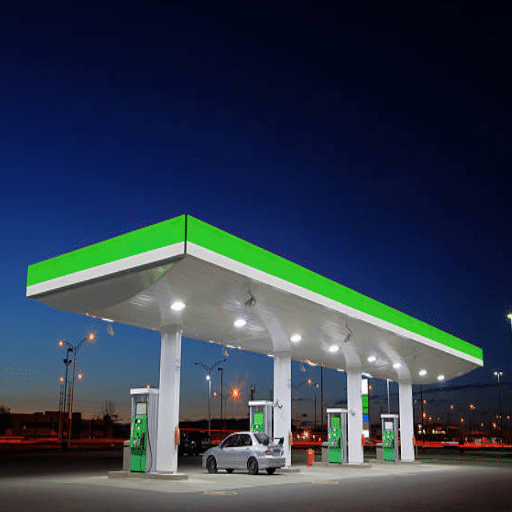
As cuisine and style of architecture have changed over time, so has the style of mini gas stations. Trends that were key include the installation of EV charging stations to address the growing need for sustainable energy options. Many mini gas stations also employ green energy solutions, placing solar panels atop their roofs to minimize environmental impact and reduce operational costs. Lastly, convenience services such as touchless payments or enhanced retail experiences should become commonplace to provide extra service to the motorist. These trends exemplify the increasing importance given to the environment, efficiency, and being flexible to the tides and shifts of energy and consumers.
Incorporating Electric Vehicle Charging Stations
The budding EV industry has posed an immediate concern: a need for accessible charging infrastructure. Mini gas stations can include EV chargers in their service portfolio to cater to changing consumer requirements. Latest data indicates that the worldwide EV industry is set to grow at a CAGR of above 23 between 2020 and 2030.
Exploring Technological Innovations in Fueling
In my opinion, one of the most impressive technological innovations in fueling has been the installation of electric vehicle charging stations alongside traditional fuel services. This adaptation is a response to emerging trends in clean energy and guarantees that feedstock infrastructure remains relevant in a quickly shifting mobility landscape. Advanced charging technology and smart energy management systems should, therefore, be installed to suit the needs of EV owners while also aligning with sustainability goals.
Adapting to Changing Consumer Preferences
Businesses must channel efforts toward enabling convenience, sustainability, and personalization in their offerings with evolving consumer preferences. The green movement on demand has impelled companies toward greener ways, such as renewable energy utilization and waste reduction in process applications. Besides that, consumers have started expecting frictionless digital experiences, with the commonly accepted design of apps and online platforms now scattered through industries and self-service options. The other establishment of personalization demands that the client expects a fit solution for newfound specific needs and preferences. Hence, the use of data analysis coupled with the feedback of consumers may enable companies to remain competitive in an ever-changing market landscape.
Reference Sources
1. Biochemical and Haematological Parameters Among Gas Station Employees
2. Determining the Viscosity Coefficient of Pertalite Gas Stations and Retail Filling Stations
3. Simulation of Dispersion and Explosion in Petrol Stations Using 3D CFD FLACS Software
Frequently Asked Questions (FAQs)
How do small gas stations manage fuel storage?
Small gas stations manage fuel storage through the use of underground storage tanks designed in compliance with safety regulations. The provision is for the tanks to hold petrol and other fuels in a way that is safe with respect to the possibility of leaking or contamination. Small stations have also often resorted to electronic monitoring systems to assist management by tracking fuel levels and alerting them for refueling on time.
What are some accessories typically found in a mini gas station?
A mini-gas station usually provides all sorts of vehicle accessories such as oil, windshield washer fluid, and air fresheners. They also offer a variety of convenience items such as portable chargers, snacks, and cool drinks. The end goal is to provide a customer with whatever he or she needs for their journey to improve their overall service experience.
How can small gas stations customize their services?
Small gas stations can customize their services by developing a practical understanding of local culture and customer preferences. This might be offering snacks preferred by the locals, offering promotional discounts, or setting up a loyalty program. Being able to cater to the community will become a source of customer loyalty while improving the reputation of the station in the community.
What is the importance of small gas stations along Route 66?
Making small gas stations the apparent cornerstone of the Route 66 experience, they act as must-have stops along travelers tracing historically infamous highways. Generally, these stations will characterize various charms and nostalgic memories of old American road trips, where travelers would stop for refuel and refreshments while admiring some local culture and history. Many have, in fact, become household names welcomed by travelers in search of both fuel and fuel for the mind.
What type of equipment is required for a small gas station?
Among the many types of equipment required in small gas stations are fuel pumps, storage tanks, and point-of-sale systems. Security and maintenance equipment such as fire extinguishers and spill kits may also be required, depending on the station. Having equipment regularized to ensure efficient functioning and safety is very much acceptable.
What does a manager do at a small gas station?
A manager at a small gas station also supervises daily activities, ensures quality customer service, controls inventory, and maintains safety standards. Training of staff is also in the scope of this position; they can affect the atmosphere of the store and the marketing strategies, hence they must know the business and its local neighborhood.
In what way do small gas stations promote the local economy?
Small gas stations promote the local economy by way of employment, by giving jobs to people, and by supporting local suppliers and counterparts in business. Quite often, small gas stations will buy their products from other small vendors nearby and giving an opportunity for the community to interact. Given the nature of small gas stations as providers of an essential service, particularly travel, they would thus be instrumental for furthering commerce in their respective areas.

